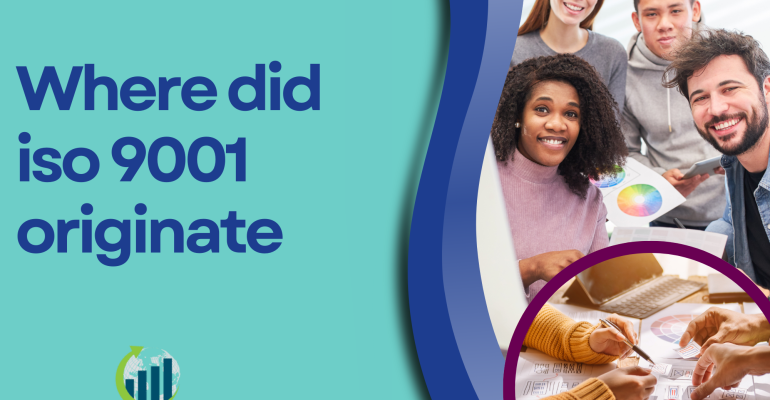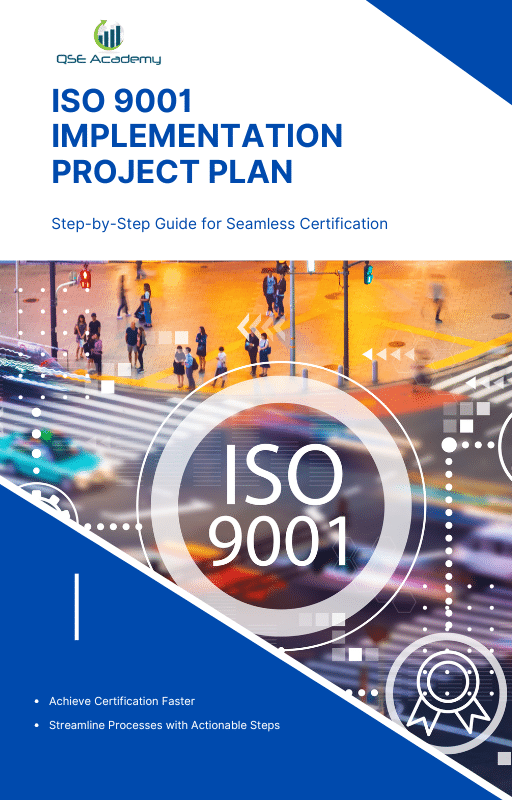Where did iso 9001 originate?
Where did iso 9001 originate?
Have you ever wondered, where did ISO 9001 originate? It’s a fascinating question, especially when you consider how this standard has become a cornerstone of quality management for businesses worldwide. Whether you’ve heard about ISO 9001 in passing or are deep in the process of getting certified, understanding where it all began adds a whole new layer of appreciation for its impact.
The story of ISO 9001 isn’t just about dates and technicalities—it’s about a global effort to create a common language for quality management. From its earliest roots in British standards to its evolution into an internationally recognized benchmark, ISO 9001 has come a long way. Knowing where ISO 9001 originated gives us insight into why it works so well today.
In this article, we’ll explore the history of ISO 9001, tracing its journey from its origins to becoming one of the most widely used standards in the world. By the time we’re done, you’ll not only understand where ISO 9001 originated but also why it’s such a big deal for businesses striving for excellence. Let’s dive in!
The History of ISO: Where Did It All Begin?
To truly understand where ISO 9001 originated, we need to rewind a bit and talk about the bigger picture: the creation of ISO itself. ISO, or the International Organization for Standardization, was born in 1947, right after World War II. It was established with one main goal in mind—bringing the world together through a shared set of standards that could make international collaboration smoother, more reliable, and, well, more standardized.
The idea was simple: different countries and industries had their own ways of doing things, but this lack of consistency made global trade and communication complicated. ISO was created to fix that. It started by focusing on technical standards for things like measurements and materials, which made it easier for businesses across borders to work together.
Fast forward a few decades, and the world was starting to realize the importance of not just having technical standards but also having standards for managing quality. This is where the seeds of ISO 9001 were planted. Understanding where ISO 9001 originated means appreciating this moment in history when the focus shifted from “How do we make things the same?” to “How do we ensure everything meets a high standard of quality?”
So, in short, ISO’s beginnings in the mid-20th century laid the groundwork for the creation of ISO 9001. This standard would go on to transform the way organizations across the globe think about quality management. It’s fascinating how something that started as a post-war initiative has grown into a global movement for excellence, isn’t it? And that’s just the start of the story of where ISO 9001 originated.
Where Did ISO 9001 Originate?
Now let’s dig into the real question: where did ISO 9001 originate? The story starts with the British Standards Institution (BSI) in the 1970s. Back then, the BSI developed a set of standards called BS 5750. These standards were created to ensure that businesses had consistent processes for delivering high-quality products and services. BS 5750 was essentially the foundation upon which ISO 9001 was built.
So, why did BS 5750 evolve into ISO 9001? Well, the world was becoming increasingly interconnected, and businesses needed a universal set of quality standards that would work across borders. While BS 5750 worked well in the UK, it wasn’t practical for global industries. This led the International Organization for Standardization (ISO) to step in and create a standard that could be adopted worldwide. And that’s where ISO 9001 originated—from the need for a universal approach to quality management.
In 1987, ISO released the first version of ISO 9001. It was based on the principles of BS 5750 but adapted to meet the needs of a global audience. This was a big deal because it marked the first time businesses around the world had a common framework for managing quality. Understanding where ISO 9001 originated gives us a glimpse into why it became so influential—it was designed to help businesses of all sizes, in all industries, operate more effectively and consistently.
Of course, ISO 9001 didn’t stop evolving there. It’s been updated several times (in 1994, 2000, 2008, and 2015) to keep up with changes in technology, business practices, and customer expectations. But no matter how much it changes, the core principles remain rooted in its origins: helping businesses deliver quality through clear, consistent processes.
So, when someone asks you, where did ISO 9001 originate?, you can confidently say that it began with British standards, but its global transformation is what made it the gold standard for quality management today. It’s amazing to think about how far it’s come, isn’t it?
Why Understanding Where ISO 9001 Originated Matters
You might be wondering, “Why does it even matter where ISO 9001 originated? Isn’t it just another quality standard?” Well, understanding its origin gives us a much better appreciation of why it’s so effective today and why it’s trusted by businesses worldwide.
1. It Highlights the Global Vision of ISO 9001
Knowing where ISO 9001 originated helps us see that it was designed from the start to be a global standard. ISO brought together experts from different countries and industries to create a framework that could work for everyone, no matter where they operated. It’s not just a set of rules—it’s a collaborative effort that reflects the shared goal of improving quality worldwide.
This global vision is why ISO 9001 is used by millions of organizations across industries like healthcare, manufacturing, education, and even government. Understanding its origins shows us that it’s more than just a checklist—it’s a system designed to unite businesses around a common commitment to quality.
2. It Builds Confidence in the Standard
When you know where ISO 9001 originated, it’s easier to trust the process. Its roots in BS 5750 and its development by the International Organization for Standardization show that it wasn’t created overnight or by a single entity. Instead, it’s the result of decades of expertise, collaboration, and refinement.
Think of it this way: knowing that ISO 9001 comes from a credible, well-established organization like ISO makes it clear why it’s so widely respected. It’s a standard that’s been rigorously tested and continuously improved to meet the needs of modern businesses.
3. It Shows How ISO 9001 Adapts Over Time
When we look at where ISO 9001 originated, we see that it started as a response to a specific need: creating consistency in quality management. Over time, it’s evolved to address new challenges, like technological advancements, globalization, and shifting customer expectations. Its history proves that it’s not a static standard—it’s one that grows and adapts alongside businesses.
This adaptability is one of the reasons ISO 9001 remains relevant today. Understanding its origins helps us appreciate how far it’s come and why it continues to be a trusted framework for quality management.
4. It Inspires Confidence in Certification
Finally, understanding where ISO 9001 originated helps businesses feel confident in pursuing certification. Knowing its history makes it clear that ISO 9001 isn’t just a box-ticking exercise—it’s a proven system that’s helped businesses worldwide achieve consistency, efficiency, and customer satisfaction. Its origins remind us that it’s a standard built on real-world needs, designed to make a tangible difference.
By exploring where ISO 9001 originated, we gain a deeper understanding of its purpose, its credibility, and its global significance. It’s not just a document or a process—it’s a symbol of trust and quality that’s been built over decades of collaboration and improvement. And that’s a legacy worth appreciating, don’t you think?
Fun Facts About Where ISO 9001 Originated
Let’s take a step back from the technical details and explore some fun and lesser-known facts about where ISO 9001 originated. These little nuggets of history give us a better understanding of the standard’s roots and why it’s such a big deal today.
1. The Name “ISO” Has a Unique Origin
Ever wondered why it’s called ISO instead of something like “IOS” (International Organization for Standardization)? Well, the name ISO isn’t an acronym—it’s derived from the Greek word “isos,” meaning equal. The idea was to create a name that symbolized uniformity and equality across global standards. So, while ISO 9001 originated as a response to quality management needs, its name reflects the broader mission of creating a level playing field for businesses worldwide.
2. BS 5750 Was the Spark
We’ve mentioned that ISO 9001’s roots trace back to BS 5750, the British standard for quality management. Here’s an interesting tidbit: BS 5750 was originally developed for manufacturing, specifically to ensure consistent quality in industrial production. It wasn’t until ISO adopted and adapted it in 1987 that it became a global framework applicable to all industries. So, when we talk about where ISO 9001 originated, it’s fair to say it was born in the UK but grew up on the global stage.
3. ISO Is Truly Global
Although ISO’s headquarters are based in Geneva, Switzerland, the organization’s influence spans the globe. ISO 9001 itself was developed through collaboration among experts from dozens of countries, ensuring it could work across industries and cultures. This global input is a big part of where ISO 9001 originated—not just geographically, but in the sense of bringing diverse ideas together to create a universal standard.
4. ISO 9001 Is the Most Popular ISO Standard
Here’s a fun fact: ISO 9001 isn’t just one of many standards—it’s the most widely adopted one. There are over one million organizations in more than 170 countries that hold ISO 9001 certification. The standard’s origins as a response to a specific need for quality management have clearly stood the test of time and continue to resonate with businesses worldwide.
5. Its First Release Was a Game-Changer
When ISO 9001 was first published in 1987, it was revolutionary. It marked the first time businesses everywhere had a common framework for ensuring quality. This innovation helped businesses expand internationally with confidence, knowing there was a universal standard to guide them. Understanding where ISO 9001 originated helps us see why its first release had such a profound impact—it was exactly what businesses needed at the time.
Learning about where ISO 9001 originated isn’t just about tracing its history—it’s also about appreciating the fascinating journey that brought it to where it is today. From its humble beginnings as a British standard to its current status as a global benchmark for quality, ISO 9001 has a rich and inspiring story that continues to evolve. Isn’t it amazing to see how something so practical has such a remarkable history?
Conclusion: Where Did ISO 9001 Originate?
So, where did ISO 9001 originate? As we’ve explored, its roots lie in the UK with the creation of BS 5750, a standard for ensuring consistent quality in manufacturing. But the story didn’t stop there. Recognizing the need for a universal approach to quality management, the International Organization for Standardization (ISO) stepped in and transformed BS 5750 into what we now know as ISO 9001. Its first release in 1987 marked the start of a global movement that continues to shape industries worldwide.
Understanding where ISO 9001 originated isn’t just a history lesson—it’s a way to see why this standard is so effective today. Its foundation in collaboration, practicality, and adaptability means it remains relevant for businesses in every industry, from local startups to global corporations.
By tracing ISO 9001’s origins, we see how it grew from a British standard to a global benchmark, trusted by over a million organizations in more than 170 countries. Knowing where ISO 9001 originated reminds us that it was designed with a purpose: to create a common language for quality management that works for everyone, everywhere.
And now, as businesses continue to evolve and industries embrace new challenges, ISO 9001 remains a trusted guide for achieving excellence. It’s amazing to think that something that started decades ago as a way to manage quality has become a cornerstone of modern business. So, the next time someone asks you, “Where did ISO 9001 originate?” you can proudly share its story—and maybe even inspire them to explore what it can do for their business!
Looking for More Resources on ISO 9001?
Looking for ISO 9001 Resources Tailored to Your Industry?
If this article helped clarify ISO 9001, take the next step with our industry-focused tools designed to simplify your certification journey:
📦 ISO 9001 Documentation Kits by Industry: Whether you’re in manufacturing, construction, consulting, or healthcare — we have complete, ready-to-use documentation tailored for your sector.
🎓 Online ISO 9001 Training: Learn how to implement ISO 9001 effectively with our easy-to-follow video lessons, real-world examples, and practical exercises.
📋 ISO 9001 Checklist: Download our step-by-step checklist to ensure your QMS meets all the 9001:2015 requirements from start to finish.
These resources are crafted to save you time, reduce stress, and help you achieve certification with confidence. Choose your industry and start now!

make ISO standards less intimidating and more approachable for everyone.
Whether it’s ISO 9001, ISO 22000, or the cosmetics-focused ISO 22716,
I’ve spent my career turning complex jargon into clear, actionable steps
that businesses can actually use. I’m not here to call myself an expert—I prefer “enthusiast” because I truly love what I do.
There’s something incredibly rewarding about helping people navigate food safety and quality management systems
in a way that feels simple, practical, and even enjoyable.
When I’m not writing about standards, you’ll probably find me playing Piano 🎹, connecting with people, or diving into my next big project💫.
- I’m an engineer specialized in the food and agricultural industry
- I have a Master’s in QHSE management and over 12 years of experience as a Quality Manager
- I’ve helped more than 15 companies implement ISO 9001, ISO 22000, ISO 22716, GMP, and other standards
- My clients include food producers, cosmetics manufacturers, laboratories, and service companies
- I believe quality systems should be simple, useful, and efficient
- Outside of work, I play piano and love learning something new every day
Let’s make ISO less about stress and more about success! 🙏






















